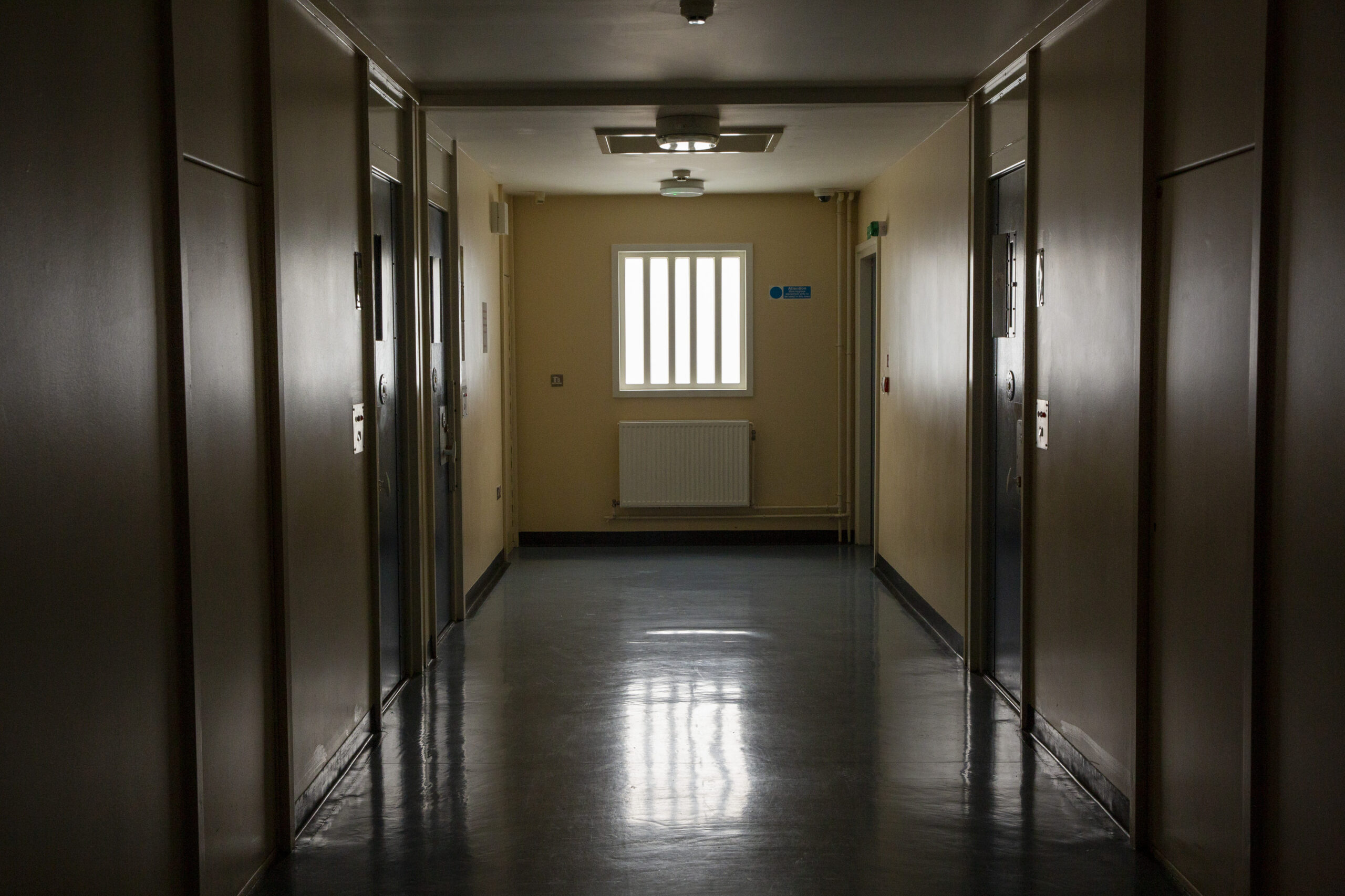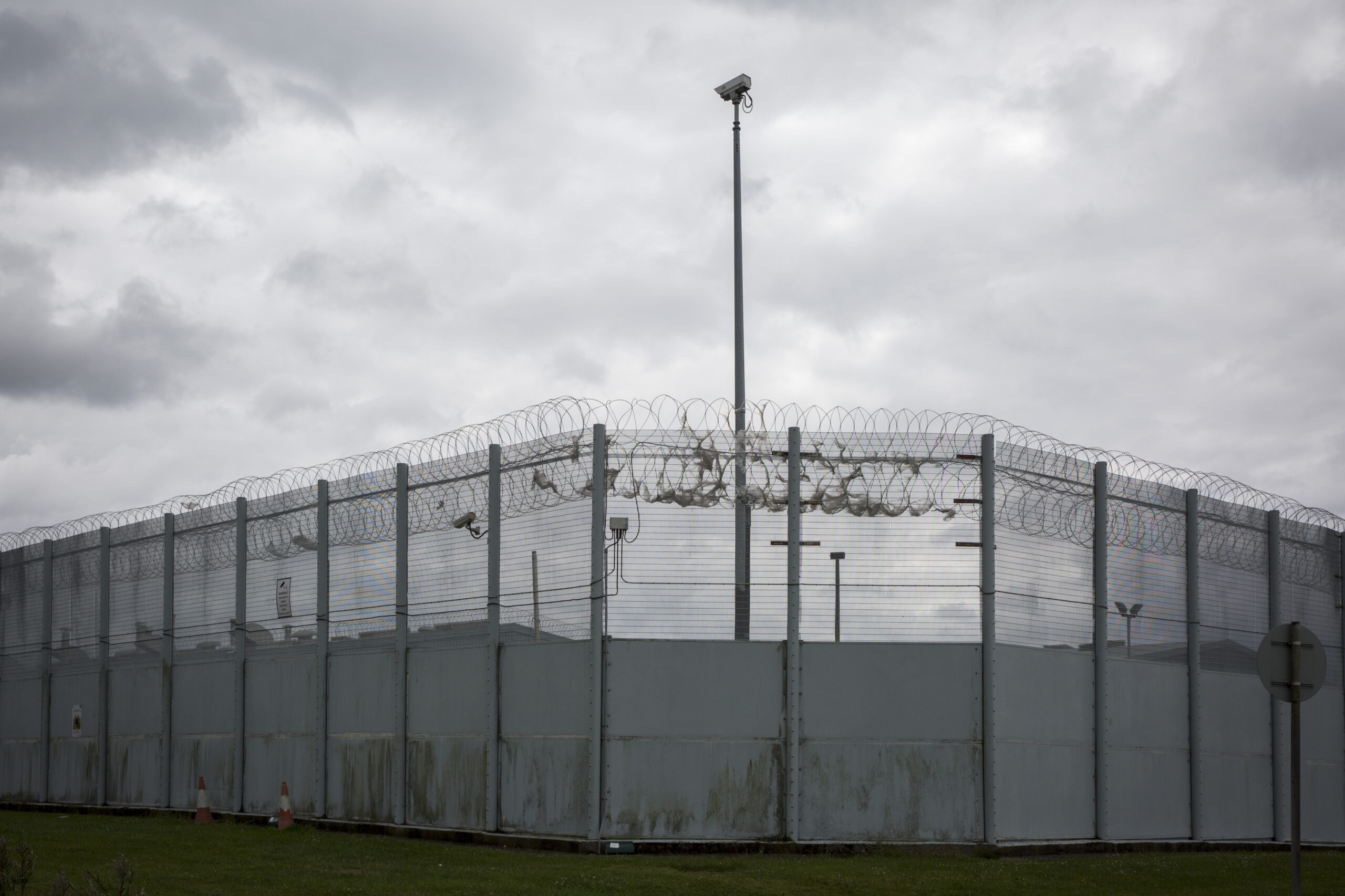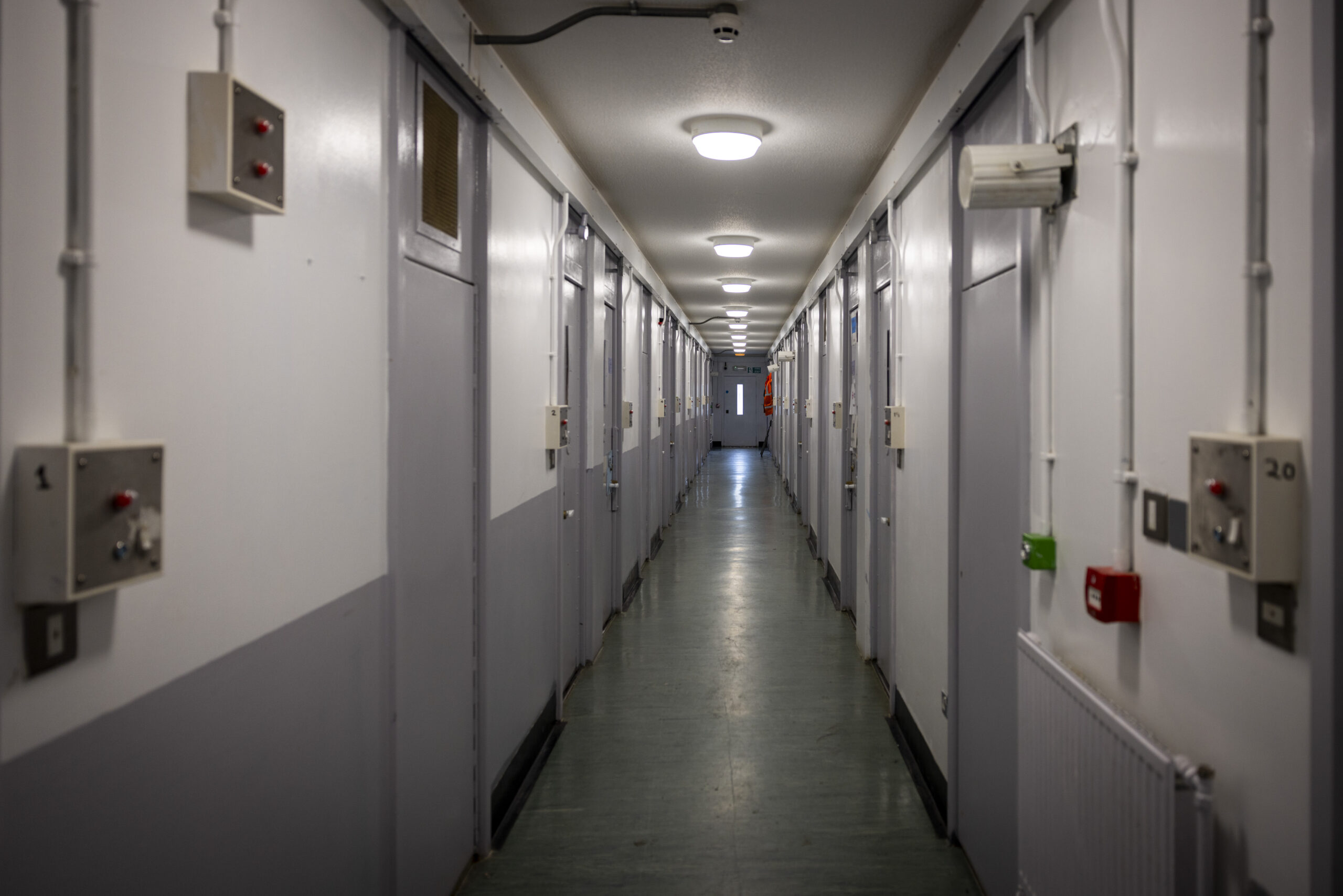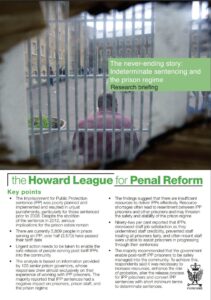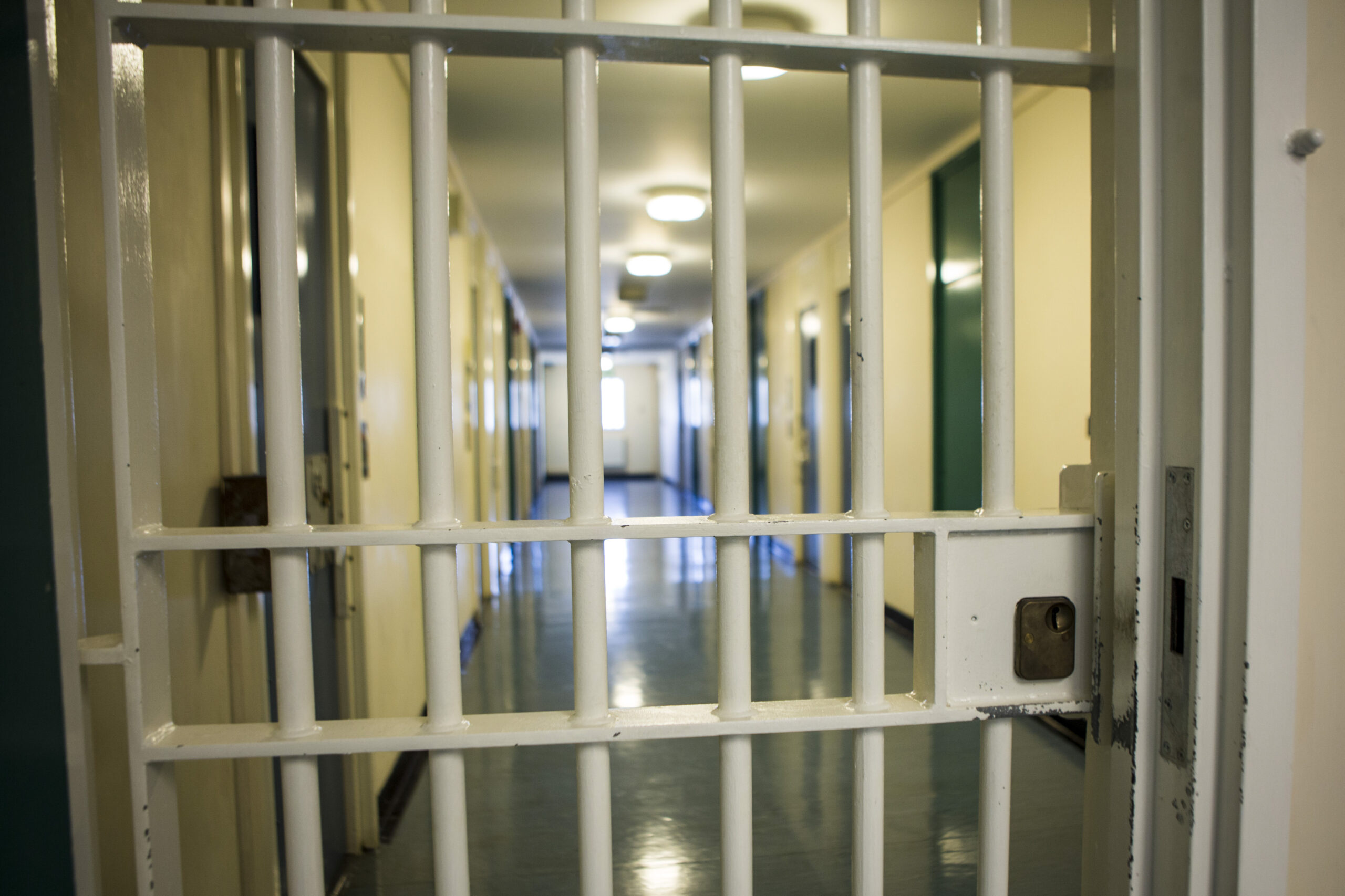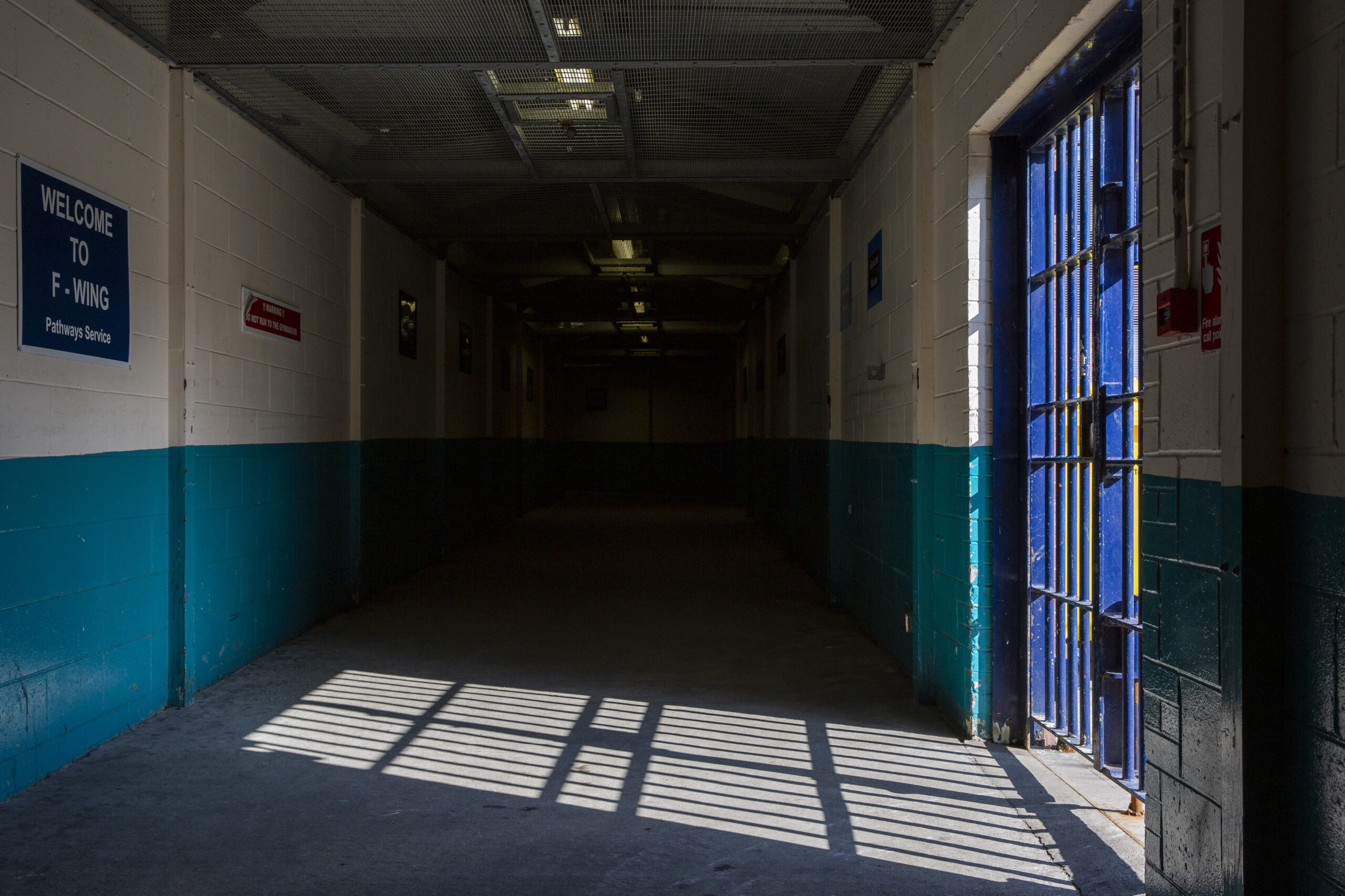What are IPP sentences?
Explaining what the problems are, the impact they are having, and how they might be solved.
“I have no hesitation in describing the continuing aftermath of the ill-starred IPP sentencing regime as the greatest single stain on our criminal justice system.”
So wrote the late Lord Brown, a former justice of the supreme court, in 2020, about sentences of Imprisonment for Public Protection (IPP). The IPP is a controversial sentence that was introduced in the mid-2000s and scrapped less than a decade later, but in that time it brought thousands of people into prison with no fixed release date – many of whom remain behind bars today.
Although more than 12 years have passed since the courts stopped handing them down, IPP sentences continue to cause injustice and misery. Newspapers, television reports and podcasts have highlighted cases in which people have spent many years, even decades, longer in prison than anticipated. And there have been several debates and inquiries in Parliament as families, campaigners, and charities including the Howard League, push for reform.
Among those calling for change is the politician who introduced IPP sentences in the first place. Lord Blunkett, who was home secretary when the Criminal Justice Act 2003 brought them into effect, said in 2024: “What has happened with this sentence is the biggest regret I have in terms of the outcome of all the many things that I was involved in in the eight years I was in government.”
The damage caused is being observed not only in England and Wales, but on the international stage as well. Dr Alice Jill Edwards, the United Nations’ special rapporteur on torture, said in 2025 that IPP sentences amounted to “psychological torture”.
Finding a resolution to the ongoing punishment of people on IPP sentences – and others who are serving a different type of abolished indeterminate sentence, known as the ‘two-strike’ sentence – is one of the Howard League’s strategic priorities.
So, what are these sentences? And how can we end this scandal once and for all? In response to the many enquiries that we have received from politicians, journalists and the public, we have created a dedicated page on our website to explain what the problems are, the impact they are having, and how they might be solved.
How are IPP sentences different to other prison sentences?
In all but the most serious cases (where people can be given sentences of life imprisonment), a judge sending someone to prison will tell them the maximum length of time they can expect to serve behind bars. It could be a few weeks, it could be several years, but the exact date on which the person’s time in prison should end is set by the court.
But IPP sentences are different. A judge handing down an IPP sentence was required to set a date, but this was the minimum length of time that the person should spend in prison – a period sometimes called a ‘tariff’. When a person on an IPP sentence reaches the end of their tariff, they are not released automatically; they will not leave prison until the Parole Board decides that they can be released. And even when this test is met, release will be ‘on licence’, which means that they can be recalled to prison by the probation service if circumstances change.
This means that, effectively, IPP sentences have operated more like ‘life’ sentences. Although they were handed down for offences that were not serious enough to warrant sentences of life imprisonment, the punishment is similar.
IPP sentences were handed down to more than 8,700 people – almost 10 times as many as the government had estimated.
IPP sentences came to be used as preventative sentences, imposed because of concerns about what someone might do rather than as a proportionate response to what they had done. Consequently, they were used much more widely than originally intended, covering more than 150 different types of crime, including affray and criminal damage.
In the seven years between 2005, when they were imposed for the first time, and 2012, when they were abolished, IPP sentences were handed down to more than 8,700 people – almost 10 times as many as the government had estimated.
Even children were affected. A parallel indeterminate sentence called the Detention for Public Protection (DPP) sentence was handed down to more than 300 children before it, too, was abolished.
IPP sentences created a host of problems. In 2011, the then Prime Minister, David Cameron, described them as “unclear, inconsistent and uncertain”. He said that this was because the public did not understand them, they resulted in people who had committed the same crime receiving different punishments, and they meant no one knew how long someone would end up serving in prison.
But when IPP sentences were abolished under the Legal Aid, Sentencing and Punishment Act 2012, they were not scrapped retrospectively, meaning that they continued to apply to people serving them at the time.
This has led to perverse outcomes. Thousands of people on IPP sentences have been kept in prison for years beyond their tariff, waiting for the Parole Board to authorise their release. Official figures show that, at the end of 2024, there were still 1,045 people on IPP sentences in prison who had not been released – and all but 10 of them had been there for longer than their tariff. That is 99%.
Some cases are particularly shocking: in 2024 – more than 11 years after abolition – the government revealed that there were five people still in prison, having never been released, whose tariff had been less than six months. To put it another way, this means that they had served their time at least 22 times over, but still had not been freed.
What are ‘two-strike’ sentences?
Unfortunately, IPP sentences are not the only controversial sentences from the past that continue to cause injustice and misery long after their abolition. ‘Two-strike’ sentences are even older – they were introduced in 1997 and replaced by IPP sentences in 2005 – but there are still people in prison serving them today.
‘Two-strike’ is the common name for an automatic life sentence that was handed down to anyone convicted of a serious offence for a second time, even if their first offence had been long ago.
As with IPP sentences, the court would set a tariff – the minimum length of time that the person must serve before becoming eligible to apply to be released by the Parole Board. The only way that the court could avoid passing a life sentence in two-strike cases was if it considered there to be “exceptional circumstances”.
Although two-strike sentences were replaced by IPP sentences, they were not scrapped retrospectively. Many of the letters that we receive mention the fact that there are still people in prison on two-strike sentences with very short tariffs, who have served even longer than those on IPP sentences. We have heard from some of them directly.
While the plight of people on IPP sentences has been highlighted by the media and in Parliament, the situation for people on two-strike sentences is much less widely understood. To add to the confusion, a new version of two-strike sentences was introduced after IPP sentences were abolished in 2012 – but these are very different to the two-strike sentences that were handed down before, and they are given in stricter circumstances.
Our campaigning, and this website page, is focused on people still affected by the first wave of two-strike sentences, handed down between 1997 and 2005.
If these sentences have been abolished, why are people still serving them in prison?
Official figures show that, at the end of 2024, there were 2,614 people serving IPP sentences in prison. The Ministry of Justice does not publish data about two-strike sentences routinely, but a parliamentary question revealed that there were 283 people serving them in prison in November 2023.
Each person in prison on an IPP sentence or a two-strike sentence is there because of a political decision – when these sentences were abolished, in 2012 and 2005 respectively, the governments of the day determined that the changes should not affect people who were serving them at the time.
But to understand why the numbers in prison remain so high, so many years after abolition, we need to look at the criminal justice system itself – in particular, the conditions inside jails and the excessive use of recall.
If you have read our explainer article, Why are prisons overcrowded?, you will know that prisons in England and Wales are facing an overcrowding crisis of unprecedented proportions.
When prisons are forced to hold more people than they are designed to accommodate, it piles more pressure on people working there and makes it harder to meet the needs of the people living there. It means that there are too many people trying to access too few resources – from basics such as phone calls, showers and healthcare to employment opportunities and places on rehabilitative courses.
This is particularly damaging for people on IPP sentences, whose only route to release involves demonstrating to the Parole Board that they have reduced their risk and are safe to leave prison, often measured by the completion of offending behaviour courses.
To put it simply: if you must complete a specific course before you can be released, and you are being held in a prison that does not offer it, and the system is so overcrowded that you cannot be moved to another jail that does, you are stuck, with no way out.
This problem has been raised again and again. In 2012, the European Court of Human Rights found that the state had failed to make appropriate provision for rehabilitative services for three men who were serving IPP sentences with short tariffs. The court ruled that this meant that the men’s detention was “arbitrary” and breached their right to protection from unlawful deprivation of liberty.
Of the 2,614 people on IPP sentences in prison at the end of 2024, about 60% had been released but later recalled.
A decade later, in 2022, MPs on the Justice Committee found “various challenges” that people on IPP sentences faced to progression, “including access to mental health services and the availability of course places”.
The scale of the problem was revealed in 2024, when the government disclosed that about 30% of people in prison on IPP sentences were not even in the correct prison to start the next formal intervention specified in their sentence plan.
Even when someone has completed their courses and successfully demonstrated to the Parole Board that they can be released safely, the story does not end there. People can be recalled to prison, even for administrative reasons – missing an appointment with the probation service, for example.
Of the 2,614 people on IPP sentences in prison at the end of 2024, about 60% (1,569) had been released but later recalled. Recall accounts for a similar proportion of those in prison on two-strike sentences – 57% (162 of 283) in November 2023.
“[W]e argue,” the Justice Committee wrote in 2022, “that the government needs to devote far greater energy to tackling the ‘recall merry-go-round’, with efforts to successfully integrating IPP prison leavers into society matching the effort made in helping them achieve release.”
What impact is this having?
IPP sentences have taken a terrible toll. In March 2025, the Independent reported that 94 people on IPP sentences had taken their own lives in prison. The article also pointed to government figures showing that, in the five years to April 2024, a further 37 people on IPP sentences had taken their own lives after their release.
Official figures show that the self-harm rate in prison is higher among people serving IPP sentences than for people serving other sentences.
When the Justice Committee held an inquiry into IPP sentences in 2022, it received a joint submission from 50 psychologists, psychiatrists and psychotherapists, which set out “grave concern about the psychological impact of the IPP sentence, and our profession’s involvement in it”.
The committee heard evidence about the “emotional and mental deterioration” of people serving IPP sentences. It reported: “Suicidal thinking and suicide attempts featured frequently in the testimonies of those serving the IPP sentence in prison, with many citing the sentence itself as a major contributory factor.”
People on IPP sentences are in a vicious circle. With no confirmed end date, the harmful psychological impact of the sentence can be enormous, generating feelings of hopelessness, anger and despair. These feelings are understandable, given the circumstances, but for people on IPP sentences they can be a barrier to release.
If someone appears angry and frustrated by the way they have been treated, it may be harder for them to convince the Parole Board that they pose no risk and can be released safely. So they stay in prison. For some people, this happens again and again and again, only compounding their misery.
Concerns about this harmful impact were raised many years ago. When the Howard League surveyed more than 100 prison governors for its 2013 briefing, The never-ending story, 86% of respondents reported that people in prison on IPP sentences experienced high levels of anxiety.
Most of the governors surveyed said that IPP sentences had a negative impact on people living and working in prison, and on the prison regime as a whole.
They explained that trying to allocate people on IPP sentences to relevant courses, or to transfer them to prisons providing the necessary rehabilitation programmes, took up a significant amount of staff time.
People serving other sentences found it harder to get on courses, too, and the long wait for everyone was causing resentment, frustration and lower staff morale.
Some people on two-strike sentences are in desperate situations. One man wrote to us to say that he was still serving a sentence that he received after he was convicted of two non-violent offences. He received a three-year sentence for the first offence and was subsequently given a life sentence for the second, with a minimum tariff of two years. But he had been in prison for more than 19 years.
Like people on IPP sentences, people on two-strike sentences often struggle to convince the Parole Board that they meet the test for release. Those who remain in prison fear they may never get out.
As one man put it, in a letter to the prison newspaper Inside Time: “[T]his sentence is a death sentence. Maybe not today or tomorrow, but in the future. A death sentence for two-strike life prisoners.”
Are there any signs of progress?
After many years of inaction by successive governments, changes brought in under the Victims and Prisoners Act 2024 have offered a chink of light to some people serving IPP sentences.
The first change, which took effect on 1 November 2024, affected people serving the IPP sentence who had been released from prison but were still on licence. If it had been at least five years since their first release from prison, and their licence had been in force continuously for the last two years, their licence (and sentence) ended immediately. More than 1,700 people fell into that category straight away.
Similar rules applied to anyone who was serving the parallel indeterminate sentence for children, known as the DPP: if it had been four years since their first release from prison, and their licence had been in force continuously for the last two years, their licence (and sentence) ended immediately.
The next big change was introduced on 1 February 2025, when about 600 people serving the IPP sentence became eligible immediately for a licence termination review by the Parole Board, seven years earlier than they would have under the old provisions (or eight years earlier if serving a DPP sentence).
The Howard League joined up with law firm Peters & Peters to provide a telephone hotline when this new legislation came in, giving confidential legal advice to people on IPP and DPP sentences, their families and friends, and professionals working with them. The hotline, which was nominated for an award, ran for three months in 2024.
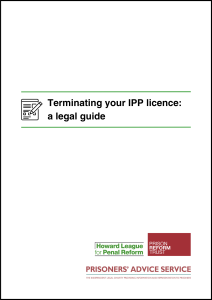 The Howard League also worked with the Prison Reform Trust, the Prisoners’ Advice Service, and consultant solicitor Dr Laura Janes to produce a legal guide, explaining when and how someone on an IPP or DPP sentence can get their licence terminated.
The Howard League also worked with the Prison Reform Trust, the Prisoners’ Advice Service, and consultant solicitor Dr Laura Janes to produce a legal guide, explaining when and how someone on an IPP or DPP sentence can get their licence terminated.
Licence termination frees those serving IPP sentences from an indefinite cycle of recall and re-release, so we wanted to make sure that as many people as possible understood their legal rights and the processes involved.
Another sign of progress is the creation of an IPP action plan, published by the last Conservative government in 2023. The plan is aimed at ensuring that HM Prison and Probation Service (HMPPS) systems and processes support people on IPP sentences to maximise their prospects of being released and, when in the community, move towards licence termination. More focus from HMPPS is welcome, but the fact that there are still thousands of people in prison indicates that more action is needed.
IPP sentences have come under more scrutiny in recent years, with newspaper campaigns, podcasts and the brilliant work of organisations such as UNGRIPP bringing the scandal to wider attention. But too little is being done to end the misery of people who are still in prison.
And the recent changes do not apply to people on two-strike sentences who are released on licence. They cannot apply to have their licence terminated by the Parole Board. They remain under supervision in the community and at risk of recall to prison, indefinitely.
How do we solve this?
In 2022, MPs on the Justice Committee suggested a new approach to resolve the situation for people on IPP sentences. After holding a year-long inquiry, they called for everyone in prison on IPP sentences to be resentenced, with an independent panel appointed to advise on practical ways to do it.
But this proposal appears to have run aground. Although it was debated by MPs when they considered proposals to be included in the Victims and Prisoners Act, it was not supported by the Conservative government, and it was not taken forward. The 2024 general election brought a change of government, but no obvious change of direction – early signs indicate that Labour ministers are not convinced by the feasibility of a resentencing exercise.
The Howard League is working for a breakthrough. We convened an expert working group, led by Lord Thomas of Cwmgiedd, a former Lord Chief Justice of England and Wales, to explore ways to protect the public while ending the IPP scandal for good. The group includes psychiatrists, a psychologist, prison lawyers, a probation officer, and an adviser with personal experience of serving an IPP sentence in prison.
The expert group published a report in June 2025. Its key recommendation is to modify the approach taken by the Parole Board in IPP cases. The current release test requires the Parole Board to decide whether it is necessary for the protection of the public for a person to be detained. But the working group proposes that the Parole Board should be asked to set a date as to when the person will be released within a two-year window, and what is required to achieve that safely. A one-year window would apply to those people serving the DPP sentence.
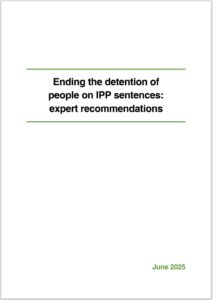 Setting a date of up to two years in the most serious cases provides a long period of time to enable professionals and statutory agencies to work together and help the person to prepare for a safe release. As a further safeguard, the reconsideration mechanism and setting aside provisions would continue to apply: these procedures enable decisions to be reviewed or set aside in certain circumstances.
Setting a date of up to two years in the most serious cases provides a long period of time to enable professionals and statutory agencies to work together and help the person to prepare for a safe release. As a further safeguard, the reconsideration mechanism and setting aside provisions would continue to apply: these procedures enable decisions to be reviewed or set aside in certain circumstances.
Once implemented, there is another safeguard in the Victims and Prisoners Act 2024 – for the Secretary of State for Justice to review certain serious cases in which the Parole Board has decided to release someone and refer them on to a relevant court for a second check.
To ensure that no one spends longer in custody than necessary under this scheme, the working group recommends giving people on IPP sentences the right to apply to the Parole Board to ask for their release date to be brought forward. This would mean that, where someone has made greater progress than expected within the timeframe set, they would be entitled to be considered for release earlier.
The report’s second recommendation is to reform the system by which people on IPP sentences are recalled to prison. The working group finds that the system is currently failing in two main ways: the threshold for recall is too low and the ‘causal link’ test is often misapplied; and there is no independent scrutiny of recall decisions before they are enforced.
The working group’s third recommendation is for a change that would mean some IPP sentences can become spent. Currently, under the Rehabilitation of Offenders Act 1974, indefinite sentences are never spent, which means that people serving IPP sentences in the community will always need to disclose information about their conviction – even on basic Disclosure and Barring Service checks – adversely affecting their ability to get work, insurance or become a volunteer.
The fourth recommendation in the report is for the introduction of an aftercare offer to all people serving IPP sentences who are released from custody with health or social care needs. This would be equivalent to the aftercare duty provided under section 117 of the Mental Health Act 1983.
The working group’s fifth recommendation is to restore the right for people on IPP sentences to apply for annual licence termination reviews.
The sixth recommendation is to reduce the hurdles for someone to bring an appeal against their IPP sentence. The working group suggests creating a positive obligation for every person serving an IPP sentence to have access to a special Criminal Cases Review Commission process, which can expedite their application to the full Court of Appeal (Criminal Division).
We need to see more progress to help people who were given two-strike sentences before IPP sentences were introduced in 2005. A good start would be for the Ministry of Justice to identify who is serving these sentences and recognise them, similarly to how the IPP action plan recognises people on IPP sentences. Perhaps the IPP action plan could be extended to include people on two-strike sentences – a move that would not require new legislation.
Ideally, the changes to licence termination introduced under the Victims and Prisoners Act would be extended to include people on two-strike sentences. A key first step would be for ministers to acknowledge the harm that two-strike sentences have caused and continue to cause, as they have with IPP sentences.
Want to know more about the prisons crisis? Read our explainer on prison overcrowding.
-
Join the Howard League
We are the world's oldest prison charity, bringing people together to advocate for change.
Join us and make your voice heard -
Support our work
We safeguard our independence and do not accept any funding from government.
Make a donation
